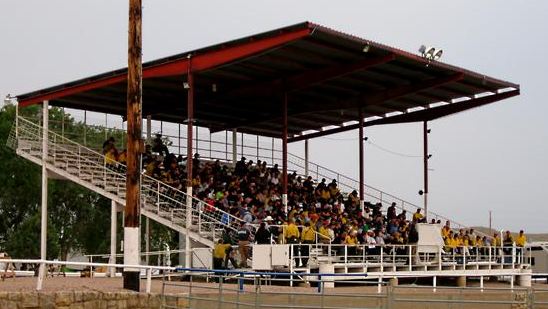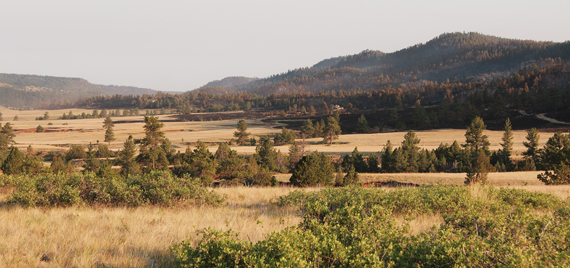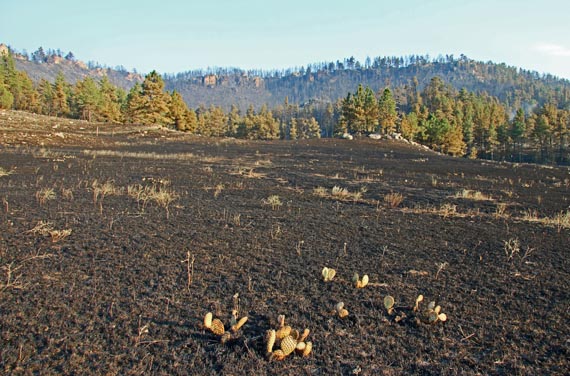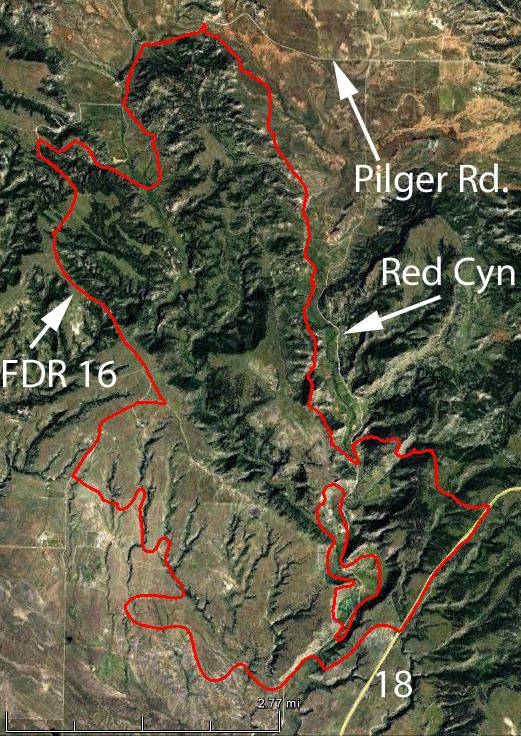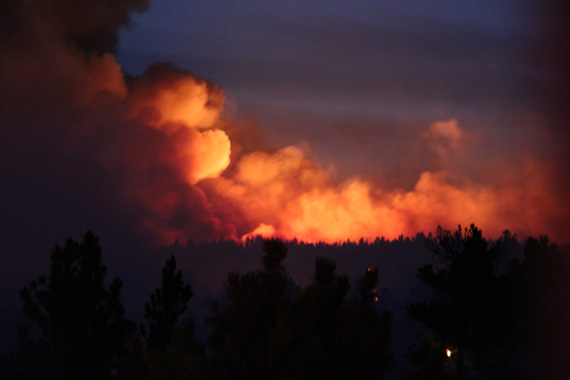
In a meeting with Senator John Thune (R-SD) on Friday, some local property owners criticized the strategy and tactics that the Incident Management Team used while suppressing the White Draw fire, which burned 9,000 acres northeast of Edgemont, South Dakota.
Here are some excerpts from an article in the Rapid City Journal:
The Edgemont Volunteer Fire Department was the first on the scene, fire chief Paul Nelson told Thune.
Nelson is frustrated with the Forest Service’s handling of the fire in its early stages and its poor communication with local firefighters.
Several local volunteers and landowners believe the fire could have been stopped in the early stages if federal officials would have consulted with them on everything from roads to equipment availability.
The firefight was mismanaged, Ben Reutter said.
“They wouldn’t ask the local guys where the roads were. That’s unacceptable,” Reutter said.
Reutter’s father, 68-year-old Edward Reutter, suffered a heart attack shortly after the fire headed for his property last Friday. He died the same night at a Hot Springs hospital.
“It was the stress,” his daughter-in-law, Becky Reutter, said.
The fire started on the edge of some rough country, volunteer firefighter and rancher Toy Litzel said. “But it could have been fought.”
Forest Service officials were unaware of roads that could have given them better access to the fire and wouldn’t take the advice of the area’s residents, locals said.
“They didn’t listen to us,” Nelson said.
[…]
There was also an underlying regret among local residents that four lives were lost in the fire when a C-130 cargo plane from the North Carolina Air National Guard crashed July 1. Two members of the crew survived the crash.
The Forest Service’s lack of regard for the local community was evident when a memorial service for the fallen men was set for 6 a.m. July 5, without notifying local residents, Reutter said.
“A lot of people would have come,” he said.
After visiting with the Edgemont area residents, Thune conferred with fire officials and U.S. Air Force representatives.
Black Hills National Forest Supervisor Craig Bobzien assured Thune that his agency was “tied in with local firefighting resources very well.”
Bobzien said the local resources were used. Firefighters from larger departments were brought in so the local units could go home in case of new fires.
“I hope there wasn’t any sort of misunderstanding there,” Bobzien said. Bobzien assured Thune he would follow up on any concerns.
This is not the first time an Incident Management Team has been criticized for the failure to communicate with locals. For example, in April a Montana landowner was awarded $730,000 after some of their land burned in the 2000 Ryan Gulch wildfire.
Without knowing exactly where, how, and under what burning conditions the locals thought the IMTeam could have stopped the White Draw fire, it is difficult to say they are wrong. However, under the hot, dry, windy conditions while the fire was cranking out thousands of acres a day, no experienced wildland firefighter would have been out in front of it while it was exhibiting extreme fire behavior. And no ranch road, two-track, or Interstate Highway can stop a timber fire pushed by strong winds.


